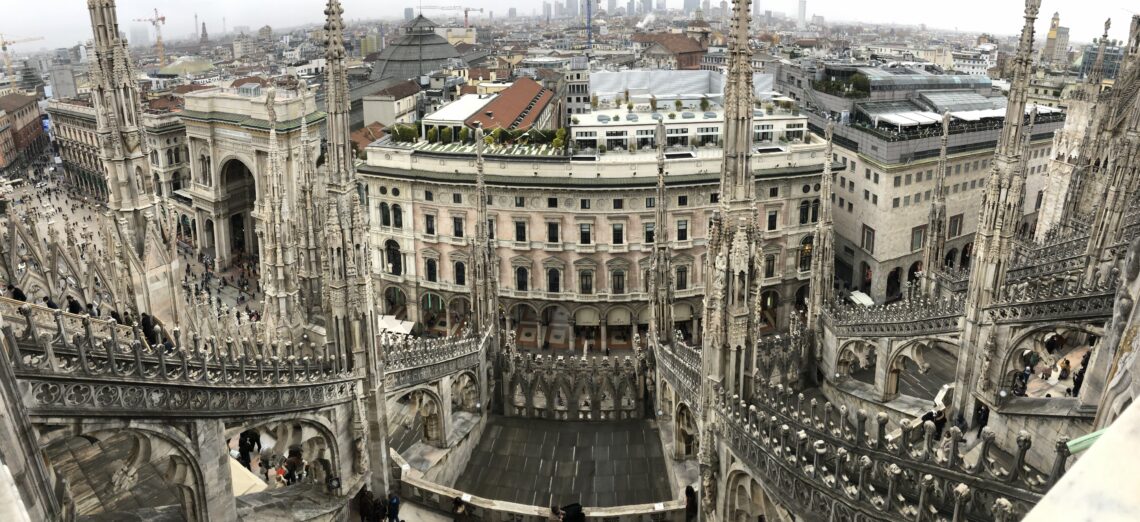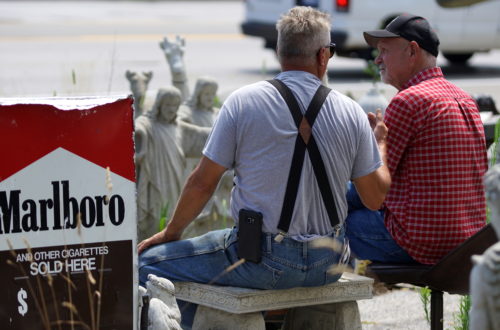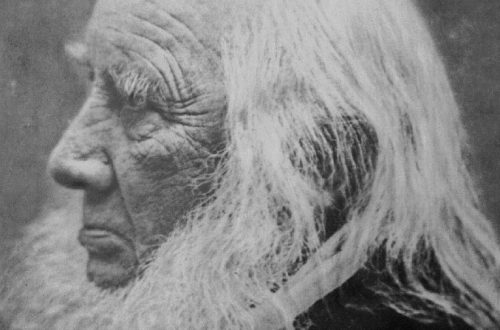by Patrick Tomassi
A Week of Celebration
I arrived in Milan around midnight the Friday before Thanksgiving, and in my rush to get to my Airbnb (and thanks to my poor mastery of Italian) I took the right bus in the wrong direction, ending up several miles further from the city center. By the time I got into town, it was after one, and I hadn’t eaten. I wandered from one closed restaurant to the next, and eventually made my way to the mammoth Duomo di Milano, brightly lit against the night sky. On the right side of the Piazza Duomo were tourist shops selling overpriced souvenirs. On the left, a line of high-end stores and packed rooftop bars. As I walked past the closed shops —Chanel, Gioielleria Currado, Tiffany & Co —I kept noticing the advertisements in their windows: “Black Friday —sconti fino al 30%.” I saw the same signs everywhere I went in Milan, Rome, and Florence: Black Friday, Black Week, and even Black Month, complete with steep discounts on all the luxury goods you need to make the holidays special. The Italians don’t celebrate American Thanksgiving — a fact my family took advantage of to have an inexpensive European vacation — but to my surprise, they’ve certainly embraced Black Friday.
Waiting for Mass to start at the Basilica of Santa Maria Novella in Florence on the first Sunday of Advent — the Sunday after Thanksgiving — my mind wandered back to those shops. We have a week of celebrations: Thanksgiving, Black Friday, Small Business Saturday, Cyber Monday, and Giving Tuesday. And right in the middle; the first Sunday of Advent, the beginning of the new liturgical year, when we start once more to prepare for the nativity. What do these two things have to do with one another — Black Friday, the Sabbath of Consumerism, and Advent?

Holiday Advertising
Imagine a family, sitting around the table. It’s a festive meal. There’s a roast bird. Someone passes the dressing. A mother smiles at a daughter. Then what? It could be almost anything. Mastercard, making your holidays possible. Or Whole Foods. Maybe the camera pans. Something is wrong. Dad’s crying. The festive mood is incomplete. Someone is missing. A doorbell rings, and the unexpected brother, dusted with snow, walks through the door. Southwest Airlines, bringing your family together this holiday season. Or instead, maybe mom looks down and sees a small package next to her plate. She looks up. Dad’s eye twinkles. She opens the box, and the bracelet inside twinkles, too. Jared, the galleria of diamonds, making this Christmas special.
These are not real ads — not that I’m aware of, anyway — but we can all imagine them. And they work, or we wouldn’t see them every holiday season. They pull at our heartstrings. And it’s worth reflecting on what these ads are doing — why they work — and what it has to do with Advent.
An ad like the ones I described works for a simple reason: humans are fundamentally motivated by desire. We have a desire for a happy family. We want our family to be drawn closer together during Christmas gatherings. We want to be happy, and for those we love to be happy. Less sentimental ads – ones selling Axe Body Spray to teenage boys, or Amazon’s Alexa SuperBowl ad featuring Michael B. Jordan – do the same thing.
In all these cases, and in almost any ad we can imagine, one principle seems to hold: what is being sold and what they want you to buy are never the same thing. Whole Foods wants you to buy groceries, but they’re selling a happy family. Southwest Airlines wants you to buy plane tickets, but they’re selling the joy of being reunited with loved ones. Axe wants you to buy body spray, and Amazon, Alexa (and then use Alexa to buy other things), but in both cases, they’re selling sex.
And the reason is simple. You only need so many groceries and plane tickets. And you don’t need any body spray or corporate listening devices. But the desire for unity and love in one’s family is less easily satisfied, as are the passions. As William Cavanaugh writes in Being Consumed, “most contemporary marketing is based not on providing information but on associating products with evocative images and themes not directly related to the product itself. Goods that cannot be commodified, such as self-esteem, love, sex, friendship, and success, are associated with products that bear little or no relationship to those goods.”
During the holidays, this is done primarily with nostalgia. The other night I was sitting in a restaurant where a basketball game was playing silently on a nearby TV. At one point, an ad came on the screen. A man replaces an old Christmas wreath on a barn and goes inside. He runs his hand over a dusty old Impala, sits down behind the wheel, and picks up a photo of a young woman. Flashback: in a grainy home video, the young woman opens the barn to find the Impala, shiny and new. She smiles at the camera, and her eyes sparkle. Back in the old car, the man fights back tears. Another young woman sees the man walk out of the barn. An idea comes to her. Several shots follow in which she sneaks the car out of the shed and gets it fixed up. Now the man walks back towards the barn with a fresh wreath, but there’s already one on the door. He opens the door to find a bright, shiny Impala. The man sits down, and finds the photo, now framed, hanging from the rearview mirror. Again he fights back tears. Then he drives out of the barn, the young woman gets into the car, and they drive off down a dusty road, as “Happy Holidays” and a Chevy logo appear on the screen.
What exactly is for sale here? Another way to ask the question is: what did I learn about? I learned that this man’s wife is dead, that he bought her this car, and that every time he sees it he is sad, but he can’t let it go. Instead, he keeps it as a shrine to her. I learned that his daughter fixed up the car to make her dad happy. I learned nothing about the Chevy Impala, although I got the vague sense that maybe Chevy is releasing a retro version of the car this Christmas season. If this ad works, it will not be because people have been convinced of the relative merits of the Impala over other classic cars, but because of the sense of nostalgia, of the rekindling of an old love, that the ad evokes.
Expectant Awaiting
At the beginning of Advent, on the feast of the Immaculate Conception, Catholics read the account of the Fall. When God asks Eve why she had eaten the fruit, she answers, “The serpent tricked me into it, so I ate it.” Earlier in the story, the serpent tells Eve to eat the fruit in order to become “like God,” in other words, not to need God. Like the advertisers, the serpent “sells” completeness, but gets Adam and Eve to “buy” alienation. One way to understand the Fall, then, is as a rejection of our dependence, of our inability to complete ourselves. The history of the Hebrew people is one of being prepared, slowly and through many betrayals, for healing of this divide.
To be a human is to be incomplete, to desire. We have desires that we are incapable of fulfilling – for beauty, justice, truth, and ultimately for happiness – what Luigi Giussani calls man’s “heart.” All people in all times have sought the ultimate fulfillment of these needs. In discussing this, Luigi Giussani draws an analogy to a vast plain, representing all of human history, covered with crowds of companies each trying to build a bridge to the stars.
Suddenly a powerful voice is heard in the immense plain, saying: “Stop! All of you stop!” And all the workers, engineers, architects stop working and look towards where the voice is coming from: it is a man, who continues, raising his arm: “You are great men, your efforts are noble, but your attempt, albeit great and noble, is a sad one. This is why so many give up and stop thinking about it and become indifferent. It is great but sad, because it will never end, it will never reach its goal. You are not able to do it because you are impotent in front of this aim. There is an insurmountable disproportion between you and the farthest star in the sky, between you and God. You cannot imagine the Mystery. Now leave your hard thankless work and follow me: I will build this bridge for you, rather, I am this bridge! Because I am the way, the truth, the life!”
The experience of Advent — the experience of Israel before the coming of Christ — is one of expectant awaiting. We await what we cannot give ourselves: the meaning of our existence.
Advertisements tell us, never in so many words, that the answer to the needs of our heart, to the indescribably nostalgia we feel at times, can be found in some finite thing. They get us to put our hope in things that cannot satisfy us. Advent, instead, invites us to embrace the lack, the incompleteness that makes us human, in order to discover the value of the one who can make us complete.
Walking around the Piazza Duomo in Milan the night I arrived, this contrast was on display. Here, a row of shops evoking the needs of my heart in order to sell me luxury goods; there, the towering gothic edifice of the Duomo reminding me of the mystery and immensity of God, of the fact that only an infinite response can satisfy an infinite need.

Patrick Tomassi teaches math and science at Trinity Academy in Portland, Ore, where he also leads a film club for high school students. He spends the rest of his time writing about education, film, music, and literature, hiking in the Pacific Northwest, and perfecting his barbeque ribs recipe. Patrick helps to organize the annual New York Encounter, and is a contributing editor for Veritas Journal.
Header Image: “Duomo from roof” by Patrick Tomassi. Used with Permission.






2 Comments
Pingback:
Henry Lewis
Loved the article. I think it is a wonderful and insightful analysis of our lives. Empty without God. Driven by desire that can only be satisfied in the One Who Gave Us Desires. For, I believe, ultimately all our desires are intended to guide us back to Him. Loved it and love your writing.